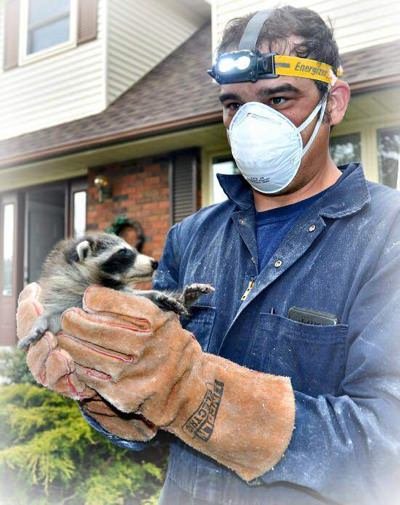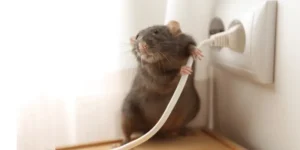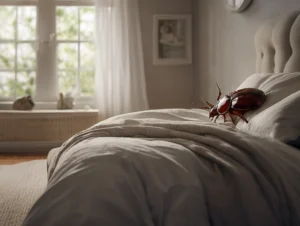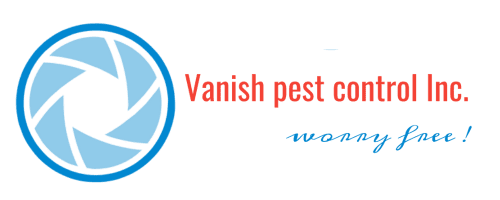Understanding Common Pests in the GTA
The Greater Toronto Area (GTA) is home to a diverse range of pests that can pose significant challenges to homeowners. Among the most common are rodents, ants, cockroaches, and termites. Each of these pests has unique behaviors and breeding patterns that facilitate their survival and proliferation in residential environments.
Rodents, particularly mice and rats, often seek shelter in homes during fall and winter months. They are nocturnal foragers and can reproduce at alarming rates, with a single female capable of producing up to 10 litters each year. Their constant gnawing can lead to structural damage, as well as the contamination of food supplies, making them a major concern for residents.
Ants, specifically species like pavement ants and carpenter ants, are another prevalent issue. Carpenter ants are notorious for nesting in wooden structures, which can weaken the integrity of homes over time. Their colonies can numbers in the thousands, and they tend to establish nests indoors, making buildings an easy target for infestation.
Cockroaches are resilient insects that thrive in warm, humid environments, often found in kitchens and bathrooms. Commonly associated with unsanitary conditions, cockroaches can carry pathogens that may lead to health problems in humans. Their rapid breeding cycle allows populations to grow quickly, making early detection and management critical.
Termites, often referred to as the silent destroyers, can cause extensive damage to wooden structures and furniture. These pests consume cellulose found in wood, making homes vulnerable to structural failure if left untreated. Termite colonies can exist underground or within wood, complicating detection and remediation efforts.
Understanding these common pests and their behaviors is essential for effective prevention. Homeowners in the GTA should remain vigilant and consider proactive measures to safeguard their properties against potential infestations.
Preventive Measures for Pest Control
Effective pest control begins with the implementation of preventive measures that can significantly reduce the likelihood of infestations in your home. One of the most critical steps is to seal any entry points that pests may exploit. Inspect your property for gaps or cracks in windows, doors, and foundation areas. Using caulk or weather stripping can help block these openings, creating a barrier that is less inviting to unwanted insects and rodents.
Proper waste management is another essential aspect of pest prevention. Ensure that garbage cans are tightly closed and regularly emptied. It is advisable to use bins with secure lids to deter pests like raccoons and rodents, which tend to scavenge for food. Composting can also attract pests if not managed correctly, so be sure to follow local guidelines on composting to minimize this risk.
Maintaining cleanliness within and around the home cannot be overstated when it comes to preventing pest invasions. Regularly cleaning countertops, floors, and other surfaces promotes a hygienic environment. Pay special attention to food storage—keep food sealed and stored in airtight containers to deter foraging pests. Additionally, a clean kitchen with promptly cleaned dishes can help eliminate potential food sources that attract pests.
The importance of landscaping should not be overlooked as it can either invite or repel pests. Keep shrubs and trees trimmed to discourage pest nesting close to your home. Maintaining a distance between foliage and the structure itself reduces the likelihood of insects entering your home. Moreover, be mindful of standing water in your yard, as it can attract mosquitoes and other pests. Making these changes not only enhances the aesthetics of your property but also acts as a proactive approach to pest control.
Natural and Chemical Solutions for Pest Control
Pest control is a critical aspect of maintaining a healthy home environment, particularly in the Greater Toronto Area (GTA) where various pests can be prevalent. Homeowners have two primary approaches to pest control: natural solutions and chemical treatments. Each of these methods has its strengths and weaknesses, making it important to evaluate them carefully before deciding on a course of action.
Natural pest control methods often appeal to those looking for eco-friendly solutions. Common approaches include the use of essential oils, such as peppermint or lavender, which can naturally repel pests when applied around the home. Other effective DIY remedies might involve mixtures of vinegar, baking soda, and water, which can deter insects without introducing harsh chemicals into your living space. Additionally, introducing beneficial insects like ladybugs or predatory nematodes can help keep pest populations in check without harming the ecosystem.
On the other hand, chemical pest control solutions have been widely employed due to their rapid effectiveness in controlling infestations. These products often provide immediate results and can cover a broader range of pests. However, chemical treatments come with potential drawbacks, including toxicity concerns for humans and pets, and the possibility of creating resistant pest populations over time. It is essential for homeowners to closely follow application instructions and safety precautions associated with any chemical pest control product.
When choosing the best method for pest management, homeowners should consider factors such as the severity of the infestation, the type of pest involved, and the environmental impact of their chosen approach. Consulting with a professional pest control service can also provide tailored recommendations based on specific circumstances, ensuring that effective and safe practices are employed. Each option, whether natural or chemical, has its place in a comprehensive pest management strategy, so careful consideration is key.
When to Call a Professional Pest Control Service
Pest infestations can quickly escalate from a minor nuisance to a serious problem if not addressed in a timely manner. Homeowners should be vigilant and aware of the signs indicating that a professional pest control service may be required. One primary indicator is the presence of droppings, which can signify an infestation of rodents or insects. Additionally, unexplained damage to walls, insulation, or furniture often points to a larger pest issue that warrants expert intervention.
Another critical sign is noticing an increasing number of pests despite attempts at DIY removal. If homemade remedies or traps do not significantly reduce the pest population, it suggests a more severe infestation that requires specialized knowledge and tools. In particular, certain pests, such as termites, can cause significant structural damage if left unchecked, resulting in costly repairs. Homeowners should also be aware that some pests, like bedbugs and cockroaches, can lead to health concerns, including allergic reactions or the spread of pathogens.
Delaying treatment can complicate the situation, as pests reproduce rapidly. This exponential growth makes it increasingly difficult and expensive to eradicate them. Early intervention by a professional pest control service can prevent a small problem from morphing into a larger issue, saving homeowners time and money in the long run.
When hiring a pest control service, homeowners should expect a thorough inspection of their property, identification of the pest species, and a detailed treatment plan tailored to their specific situation. Trained technicians will utilize tools and methods that are typically beyond the scope of DIY approaches, ensuring an efficient and effective resolution to the problem. In conclusion, recognizing the signs of a serious infestation and understanding the importance of professional help can safeguard a home from future pest invasions.








